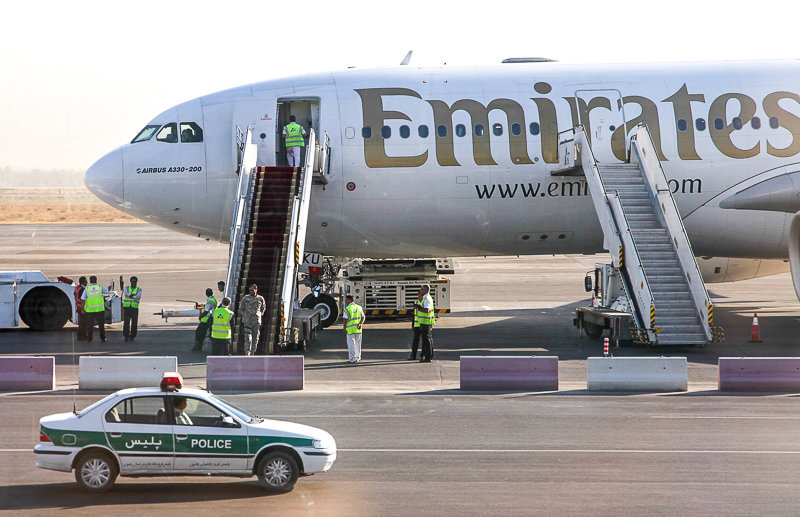The world’s biggest international carrier Emirates touched down in Mashhad for the first time last week, adding the northeastern city to its only other Iranian destination, Tehran.
However, if removal of sanctions goes ahead—a move that drew one step closer last Wednesday when US President Barack Obama secured the final senatorial vote needed to get the agreement past Congress—then it seems likely that Emirates will follow in the footsteps of flydubai, wrote Dubai-based weekly business magazine Arabian Business.
The low-cost carrier, also based at Dubai International Airport, has steadily wound up its presence in the Islamic Republic in recent years. An announcement in May that the airline would operate a service to the Iranian city of Lar, the capital of Larestan County in Fars Province, now means that flydubai serves nine destinations in Iran. Air Arabia, based in neighboring Sharjah, flies to six airports in the country.
Iranian carriers’ aging fleets are also a potential bonanza in the making for aircraft manufacturers. According to Australia-based aviation information and analysis consultancy, Centre for Asia-Pacific Aviation, the average fleet age of the country’s 215 jets is nearly 25 years, making them some of the oldest in the world.
Iran Air operates the world’s longest serving Boeing 747 passenger aircraft, which was manufactured back in 1976—three years before the Islamic Revolution.
Until now, Iranian airlines have had to resort to cannibalizing old aircraft for spare parts and finding innovative ways to get around western sanctions imposed against the country over its nuclear energy program.
Earlier this year, Mahan Air was alleged to have bought nine aircraft, worth more than $300 million, using a complex series of deals using a small Iraqi airline as a front.
In an interview with IRNA two months ago, the deputy head of the Iranian civil aviation authority said local airlines would be needing 80 jets a year, adding up to 400 over five years. Airbus and Boeing are waiting in the wings, eagerly waiting for the billions of dollars worth of contracts that will head their way.
Alongside Emirates, flydubai and Air Arabia, Qatar Airways and Turkish Airlines have also been steadily ramping up their presence in Iran.


